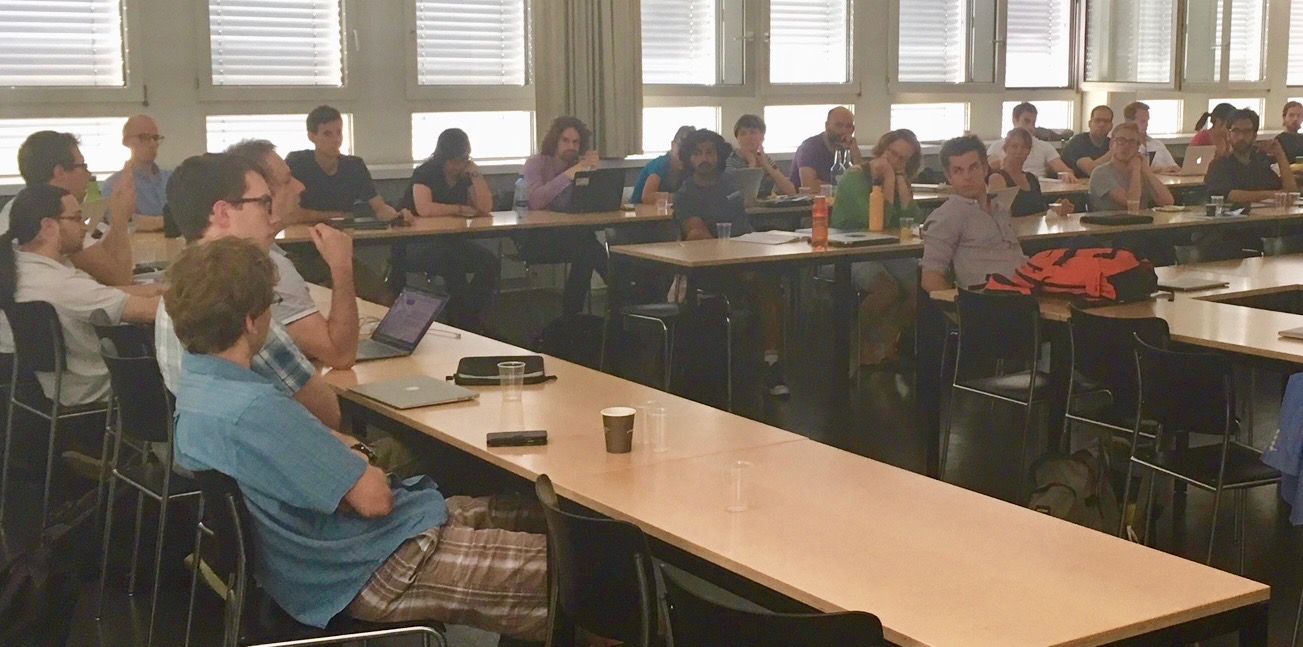Confronting theory and observations

30 members of PlanetS gathered on the 9th of July 2018 in Bern for a workshop with the title “Exoplanet Demographics: Observations Confront Planet Formation Theory”. “We have such good expertise in the NCCR that you just have to bring people together,” says organizer Christoph Mordasini: “That is the challenge.”

Participants of the workshop Exoplanet Demographics in Bern. (Photo PlanetS)
One of the reasons why the workshop took place in Bern was a speciality developed there. It is called “Extrasolar planet population synthesis”. The term was introduced by Christoph Mordasini in his doctoral thesis in 2008. Together with Willy Benz and Yann Alibert, he developed a framework using global planet formation models to calculate populations of planets for a large number of protoplanetary disks. Varying the disk mass, metallicity and lifetime the model produces a different synthetic system for each run. Limiting the amplitude of the radial velocity and orbital period to observable data, this method results in the observable, synthetic planets. “These can be compared with the planets actually observed,” explains the professor of the University of Bern.
This confrontation of theory and observation was the topic of the workshop organized by Christoph Mordasini together with former PlanetS member Michael Meyer who moved from Zurich to the US, where he now holds a professorship at the University of Michigan in Ann Arbor. The Bernese global model is based on a formation scenario called core accretion. First a solid core is aggregated before the nascent planet attracts gas. At the workshop Simon Müller, PhD of the University of Zürich, presented an extrasolar planet population synthesis model based on an alternative theory called disk instability where gaseous clumps collapse via their own gravity directly into a planet.“Core accretion seems to be the dominant mechanism of planet formation at least in the inner part of the protoplanetary disk, but there are hints that giant planets with more than 5 to 10 Jupiter masses could possibly be formed by disk instability,” summarizes Christoph Mordasini.
Few giants far out
From observations using the radial velocity method the researchers know that about 10% of the stars have giant planets in orbits within less than 10 AU. Further out, the situation is very different as two direct imaging surveys, the American GPI and the European SPHERE GTO survey, start to show. Observational constraints from those surveys were presented by guest speaker Mariangela Bonavita of the Royal Observatory in Edinburgh. Direct imaging reveals that only about 1% of the stars have a young giant planet in a distance of 10 to 30 AU. “This is an important insight”, comments Christoph Mordasini: “It shows that disk instability is either rare or that the planets do not stay where they were created.”
Observations of the Kepler satellite as well as with the radial velocity method also show that most smaller planets exist in systems. Therefore, researchers should not only compare single planets with each other, but also systems, recommended NCCR director Willy Benz. Christoph Mordasini hopes that in the future the exchange between people from different domains will intensify. “This time the workshop was a bit theory-oriented”, he concludes. (bva)
Categories: Internal Newsletter, News
